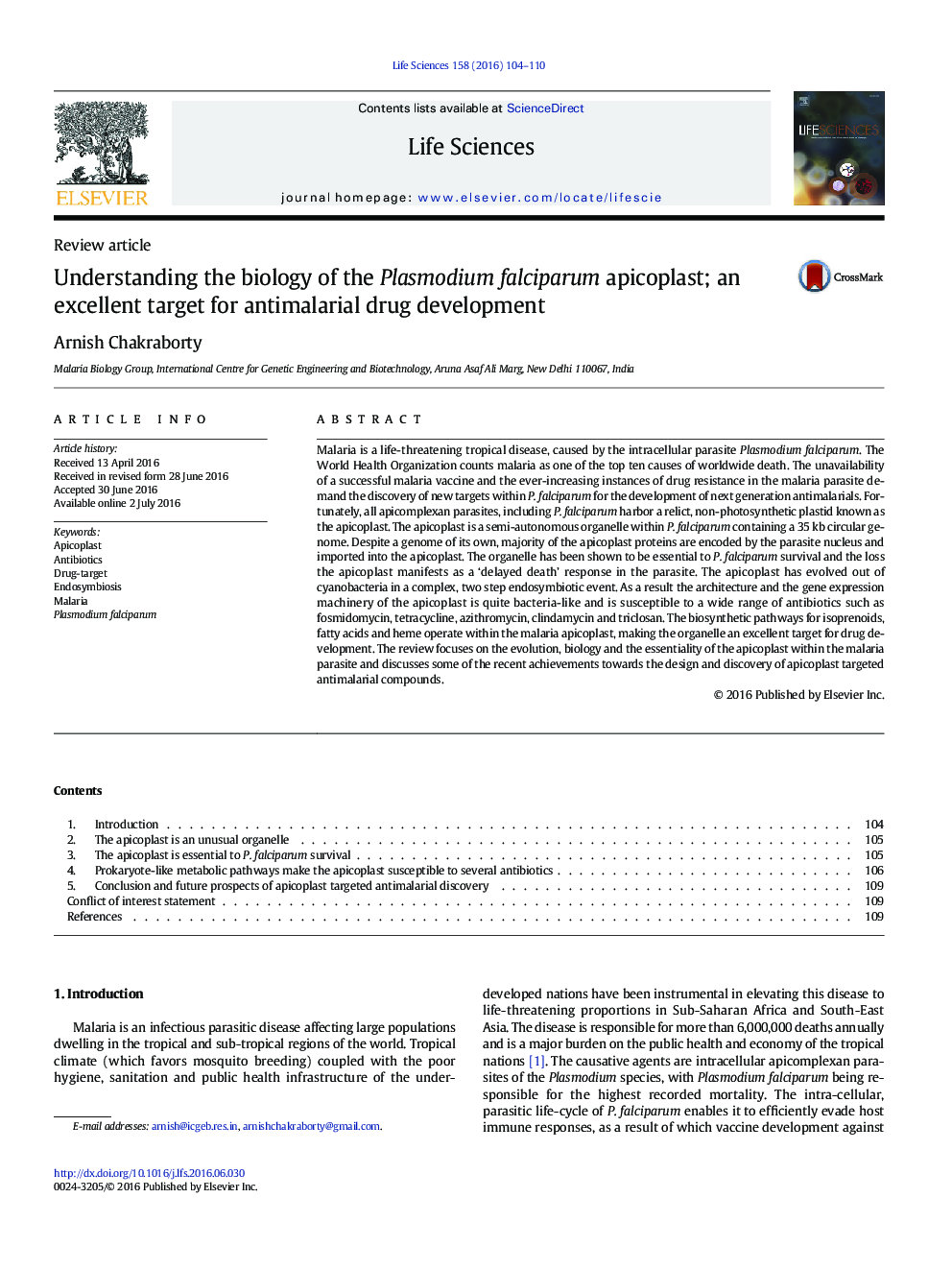| Article ID | Journal | Published Year | Pages | File Type |
|---|---|---|---|---|
| 2550447 | Life Sciences | 2016 | 7 Pages |
Malaria is a life-threatening tropical disease, caused by the intracellular parasite Plasmodium falciparum. The World Health Organization counts malaria as one of the top ten causes of worldwide death. The unavailability of a successful malaria vaccine and the ever-increasing instances of drug resistance in the malaria parasite demand the discovery of new targets within P. falciparum for the development of next generation antimalarials. Fortunately, all apicomplexan parasites, including P. falciparum harbor a relict, non-photosynthetic plastid known as the apicoplast. The apicoplast is a semi-autonomous organelle within P. falciparum containing a 35 kb circular genome. Despite a genome of its own, majority of the apicoplast proteins are encoded by the parasite nucleus and imported into the apicoplast. The organelle has been shown to be essential to P. falciparum survival and the loss the apicoplast manifests as a ‘delayed death’ response in the parasite. The apicoplast has evolved out of cyanobacteria in a complex, two step endosymbiotic event. As a result the architecture and the gene expression machinery of the apicoplast is quite bacteria-like and is susceptible to a wide range of antibiotics such as fosmidomycin, tetracycline, azithromycin, clindamycin and triclosan. The biosynthetic pathways for isoprenoids, fatty acids and heme operate within the malaria apicoplast, making the organelle an excellent target for drug development. The review focuses on the evolution, biology and the essentiality of the apicoplast within the malaria parasite and discusses some of the recent achievements towards the design and discovery of apicoplast targeted antimalarial compounds.
Graphical abstractFigure optionsDownload full-size imageDownload high-quality image (216 K)Download as PowerPoint slide
